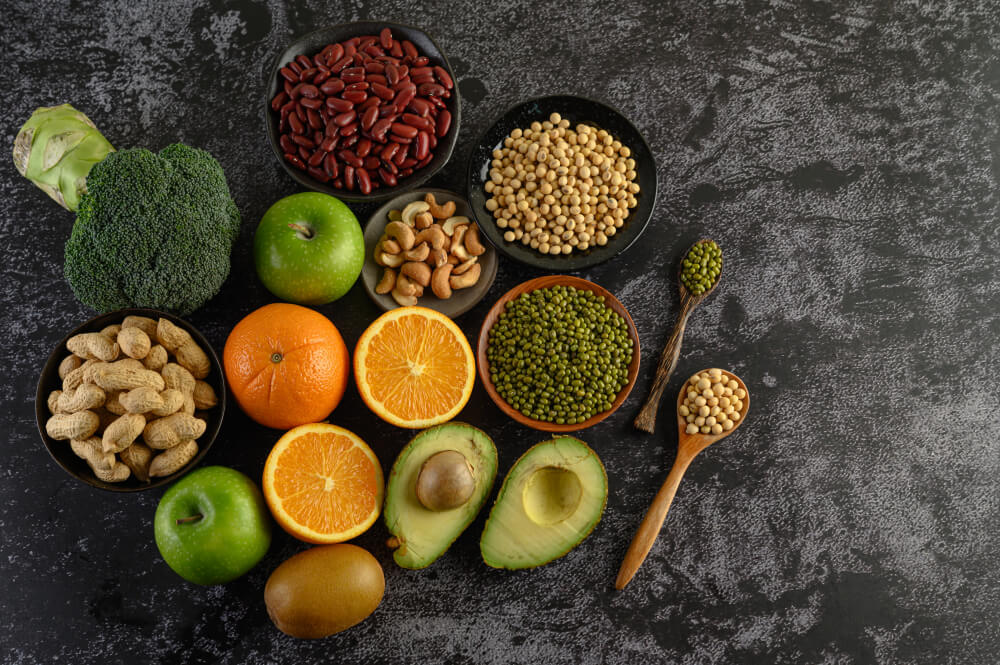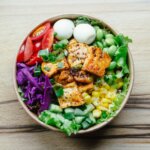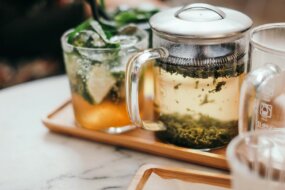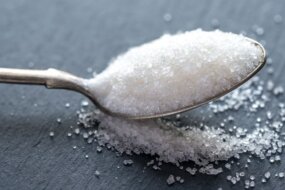
We all hear about the many wonderful foods that are good to eat, and good for us. We always hear about eating fruits, and vegetables, and nuts. But that’s a big list to sort through, and wouldn’t it be simpler to have a few superfoods that you can always turn to? To help you in your endeavors to lead a healthy lifestyle and a healthy life you can use the list compiled below as quick reference list of 11 superfoods.
Fruits
- Cantaloupe
A quarter of a cantaloupe offers nearly all of the vitamin A needed in one day. Since beta-carotene in a cantaloupe converts to vitamin A, you get both nutrients at the same time. These vision-improving nutrients can help lower the risk of developing cataracts. Cantaloupe, like oranges, is high in vitamin C, which supports our immune system. It is also high in vitamin B6, dietary fibre, folate, niacin, and potassium, all of which help to maintain healthy blood sugar levels and metabolism. This pale orange power fruit can help lower our risk of cardiovascular disease, stroke, and cancer.
2. Blueberries
These slightly sweet (and sometimes tangy) berries have a high capacity to kill free radicals, which can cause cancer. They are low in calories and high in antioxidant phytonutrients known as anthocyanidins, which improve the benefits of vitamin C. These antioxidants can be beneficial in the prevention of cataracts, glaucoma, varicose veins, haemorrhoids, peptic ulcers, heart disease, and cancer.
Vegetables
3. Tomatoes
Tomatoes aid in the prevention of heart disease and cancers such as colorectal, prostate, breast, endometrial, lung, and pancreatic cancer. Tomatoes are also high in vitamin C, A, and K. In a study, it was discovered that only drinking tomato juice would help minimise blood clotting.
New, organic tomatoes contain three times as much lycopene, a cancer-fighting carotenoid. Natural ketchup is much healthier than traditional ketchup! Look for tomato pastes and sauces that include the whole tomato (including the peels), as you can consume 75 percent more lycopene and almost twice as much beta-carotene.
4. Sweet potatoes
Sweet potatoes are an excellent source of vitamin A, C, and manganese, as well as copper, dietary fibre, vitamin B6, potassium, and iron. Those who smoke or are exposed to secondhand smoke can benefit greatly from this root vegetable, which helps protect us from emphysema.
Cube a baked sweet potato and slice a banana for a one-of-a-kind dessert. Then drizzle with maple syrup and sprinkle with cinnamon, if desired. To make it even better, throw in some sliced walnuts.
5. Spinach and kale
Spinach and kale are the top green leafy vegetables in terms of cancer-fighting and cardio-protective properties. They, like broccoli, are a good source of vitamins A and C. Kale has a surprising high calcium content of 25% per cup when boiled. Spinach also contains a high concentration of vitamin K, with about 200 percent of the Daily Value available to help prevent bone loss.
Grain (Whole)
6. Whole-wheat bread, pasta, and brown rice
The first thing to look for in whole grain bread and pasta, whether it’s bread or pasta, is that it’s 100 percent whole grain. Remember to read the ingredient list on the box. Look for the exact term “whole wheat flour” as one of the first ingredients mentioned in whole wheat bread, for example. If it isn’t labelled as whole grain, it isn’t. Wheat bran is a cancer-fighting grain that also aids in bowel control.
Brown rice is a better alternative than refined grain (white rice) for the same purpose that whole wheat bread is. Whole wheat flour or brown rice that is processed into white flour or white rice loses between 50 and 90 percent of the vitamin B3, vitamin B1, vitamin B6, manganese, phosphorus, iron, and all of the dietary fibre and essential fatty acids that we need. And when white flour or white rice is “enriched,” it is not the same as the original unprocessed variety. In reality, 11 nutrients are lost during the “enrichment” phase and are not replaced!
Nuts

7. Walnuts
These nuts are high in omega-3 fats, which are considered “healthy” fats. A quarter cup of walnuts will provide approximately 90% of the omega-3s needed in one day. Walnuts have many health benefits, including cardiovascular safety, improved cognitive performance, and anti-inflammatory benefits for asthma, rheumatoid arthritis, and inflammatory skin diseases such as eczema and psoriasis. They can also help fight cancer and boost the immune system.
Legumes and beans
8: Black Beans and Lentils
Lentils, like black beans, are high in fibre, which can help lower cholesterol. The high fibre content in both black beans and lentils aids in blood sugar regulation. Black beans and lentils are also a fat-free, high-quality protein with additional minerals and B-vitamins that fill you up without expanding your waistline.
When you can find a bag of 15-bean mix (includes black beans, lentils, navy, pinto, red, kidney, and so on) at the grocery store, you have a full, one-stop source for using a variety of beans and lentils. Consider combining this bean mixture with tomatoes, onions, garlic, and your favourite spices to make a tasty soup.
Dairy
9: Skim Milk and Yogurt
Skim milk (or low-fat milk) promotes bone health by providing an excellent source of calcium, vitamin D, and vitamin K. These nutrients aid in the protection of colon cells against cancer-causing toxins, bone loss, migraine headaches, premenstrual symptoms, and childhood obesity. Recent research also shows that eating low-fat dairy products like skim milk and yoghurt helps overweight adults lose weight, especially around the midsection.
Yogurt also contains important nutrients including phosphorus and vitamin B2, vitamin B12, vitamin B5, zinc, potassium, and protein. The live bacterial cultures in yoghurt also provide a plethora of health benefits that can help us live longer lives and improve our immune systems.
Seafood
10: Salmon
Salmon has a high protein content, a low saturated fat content, and a high omega-3 fat content (the essential fatty acids that are also found in those walnuts mentioned earlier). Salmon is a heart-healthy food that should be consumed at least twice a week. When it comes to salmon, it’s best to avoid farm-raised and instead go for wild. According to research, farmed salmon can cause cancer due to high levels of carcinogenic chemicals known as polychlorinated biphenyls (PCBs).
in addition;
11. Green Tea and “Power” Water
While not technically food, the health benefits of these drinks are noteworthy.
Green tea contains more phytonutrients and less caffeine than any other tea. The more research that is done on green tea, the more health benefits that are discovered. Green tea has antioxidant properties that reduce the risk of bacterial or viral infections as well as cardiovascular disease, cancer, stroke, periodontal disease, and osteoporosis.
Water enriched with vitamins and/or naturally sweetened fruit is also a common new trend. Some claim to have a full day’s supply of vitamin C, while others claim to have no artificial sweeteners and a full, fruity flavour.
As you can see, the top ten super foods are well worth eating (or sip). What is more important than investing in your health now that you know the foods will help save your life?
Suggested Post: Dieting? Try These Healthy Foods for Better Result

























